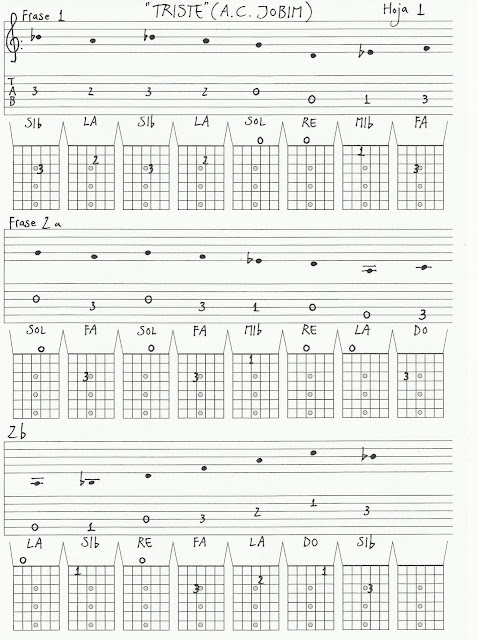Note for Spanish readers:
* Haciendo Click en "May Blog (2012)", al principio de esta página, tendrás el blog de Mayo en Inglés, y un poco más abajo en Castellano.
* Haciendo Click en "May Blog (2012)", al principio de esta página, tendrás el blog de Mayo en Inglés, y un poco más abajo en Castellano.
Hello Everybody!,
I'm back with some contents extracted from the stuff I've been teaching during May.
As you can see, nylon string guitar is the center of attention this month.
I hope this material helps you to spend some good time with your guitar.
"My Way" (Frank Sinatra)
In this video you'll see me playing the melody of this classic tune. I play along first with the original recording, and after that it's just me without the music in the background.
As you can see, the goal is to play the melody, and I also try to follow rhythmically Frank Sinatra's voice.
I didn't practice it too much, but I thought the result was acceptable.
TAB appears on screen so you can play along with the video.
I hope it's fun.
As you can see, the goal is to play the melody, and I also try to follow rhythmically Frank Sinatra's voice.
I didn't practice it too much, but I thought the result was acceptable.
TAB appears on screen so you can play along with the video.
I hope it's fun.
"Triste" (A.C. Jobim)
I've been teaching this melody to my student Cleide, one of my online students. I send her a lesson every week based on the material she requests.
I created a special template for her to locate the notes easily, including standard notation, Tab, diagrams and the actual name of the note.
The left hand fingering is also included in the diagrams.
She is keen to read standard notation, and I thought a bit of help would be a good idea.
Exercises over a the chord sequence ("Dm, C, Bb, A")
One of my students asked me recently for a couple of ideas to improvise over a particular chord progression.
This sequence is used very often in Flamenco, but it also appears in other styles like Pop, Rock, Metal...
The approach I've used here can be extrapolated to any other chord sequence.
I've emphasized several aspects in this exercise:
- Having the scale position right where the chord is played.
- Playing the scales ascending and descending.
- Being able to play the arpeggios right where we play the chords. Arpeggios are the same notes which form the chord, but played melodically.
Triads (three note arpeggios)
Dm: D F A
C: C E G
Bb: Bb D F
A: A C# E
Quatriads (four notes arpeggios)
C7: C E G Bb
Bbmaj7: Bb D F A
A7: A C# E G
-Finding new colors using the Melodic Minor Scale, instead of the D Natural Minor Scale (Aeolian), and D Harmonic Minor Scale.
Keep in touch, and see you next blog!.
Jose






No comments:
Post a Comment